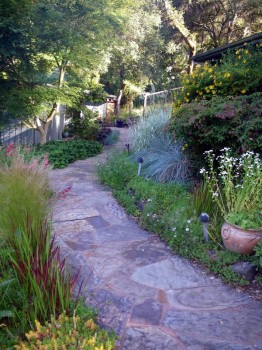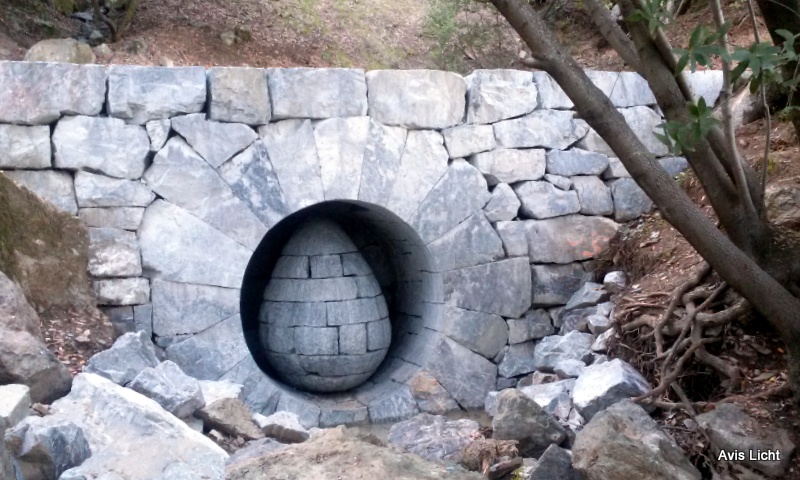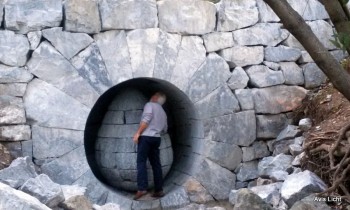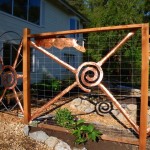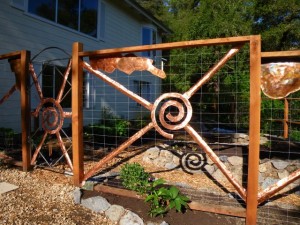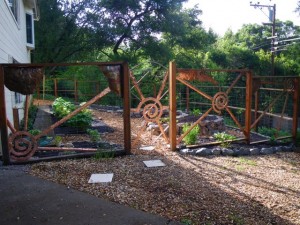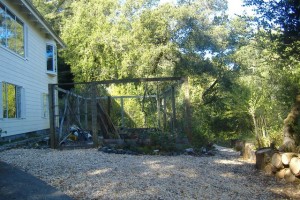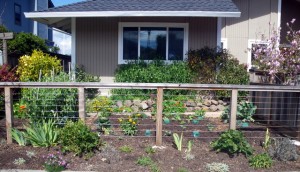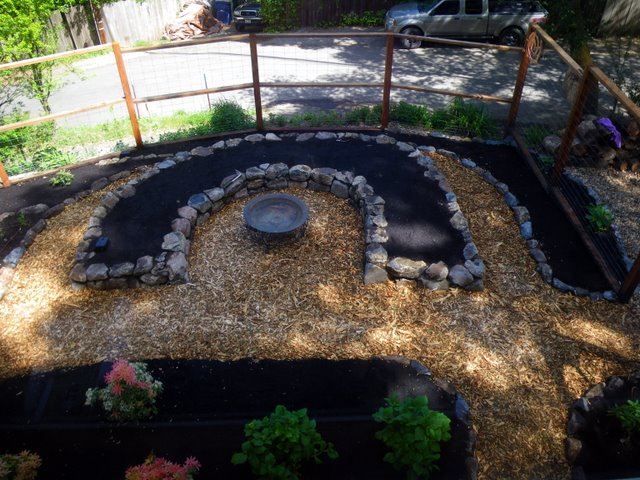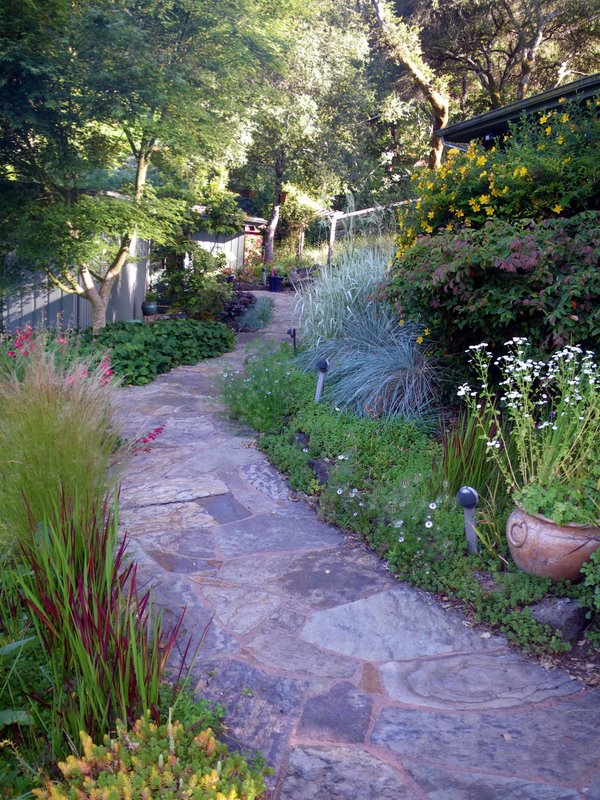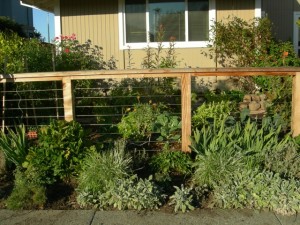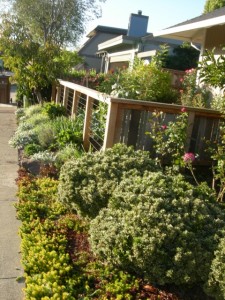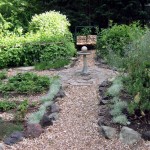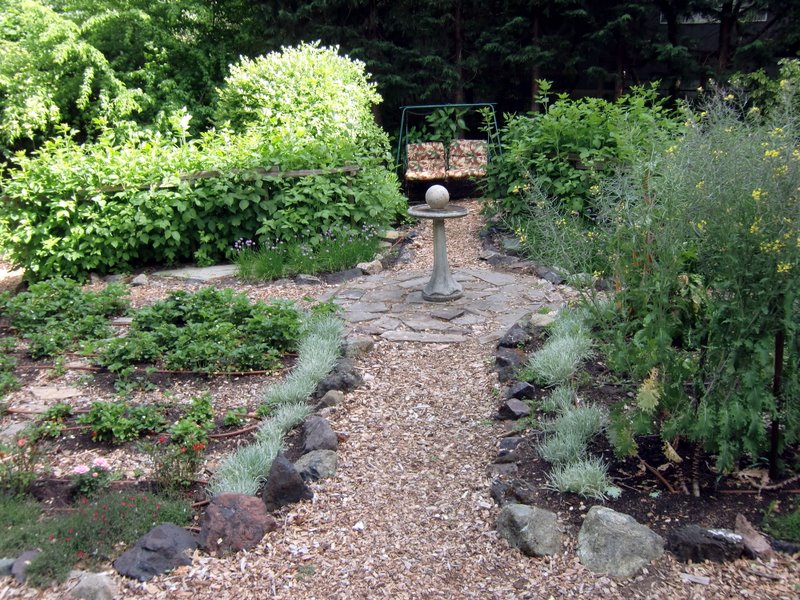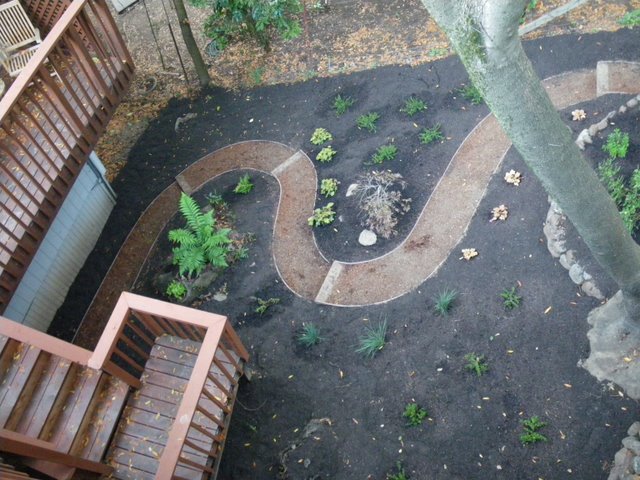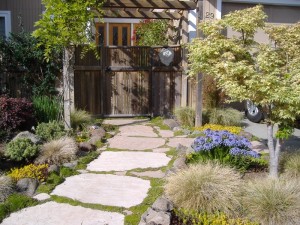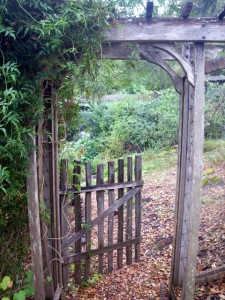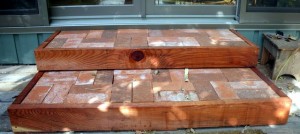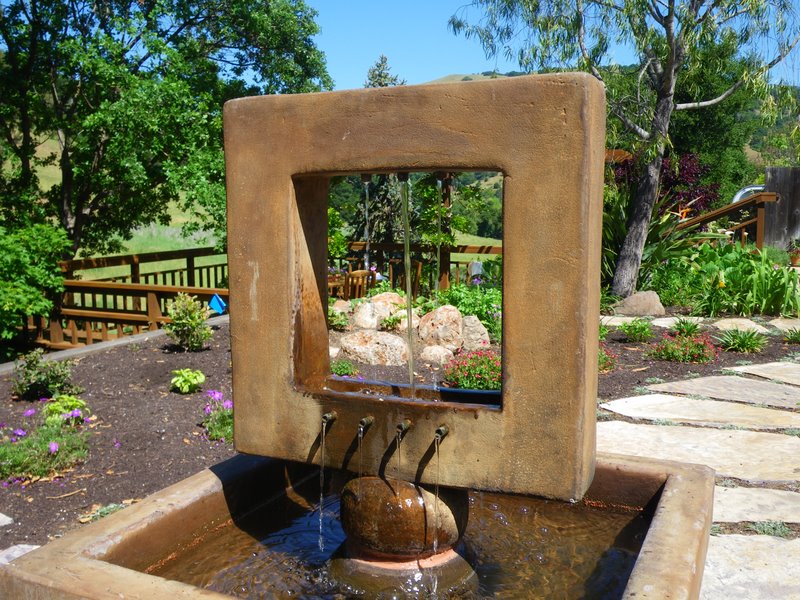
Fountain provides the sound of water
When designing a garden, you want to consider all your senses. In this post on landscape design I talk about landscaping for all your senses: sight, smell, hearing and taste.
The first sense is visual. What looks pleasing can vary widely between people. Some people prefer clean, formal lines, some prefer the wild and wooly chaos of a natural setting. And there’s everything in between. When designing your own yard, be sure to look at magazines and books with gardens. You’ll find that certain styles will really appeal to you. You’ll keep coming back to the same type of garden. Take these design elements and work them into your landscape. You may live in Portland and love the Southwest desert look, and in that case you’ll have to make some real adjustments in plant choice. But you can still get the Feel of the southwest.
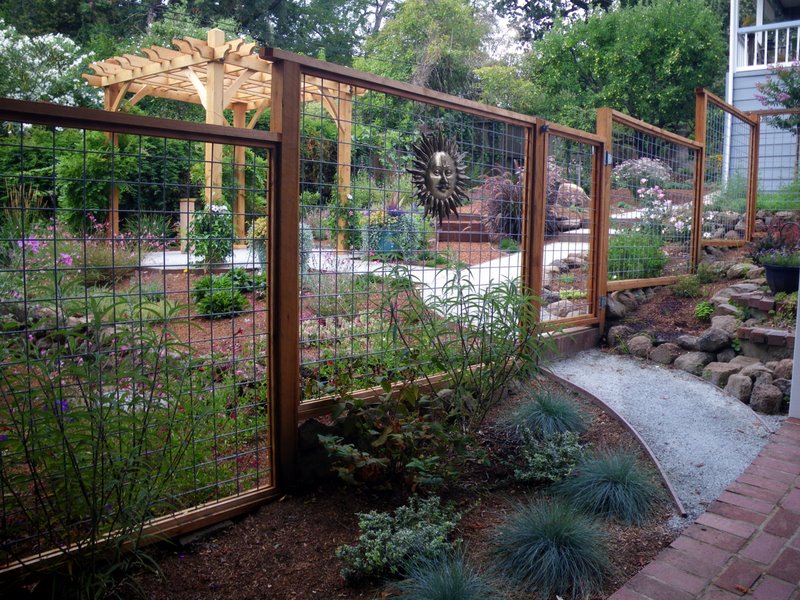
An informal garden with paths leading you through the gate
Designing for smell let’s you consider plants that have wonderful fragrance. Many vines such as jasmine, clematis and roses can transport you to another world as you walk under an arbor. Bulbs such as narcissus can naturalize in informal areas and provide cut flowers. Night scented plants such as Datura and Nicotiana will do their work after the sun has set, and while you’re sitting quietly on your deck.
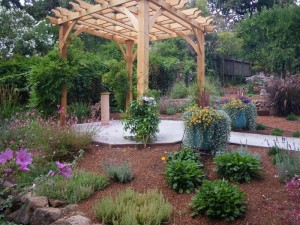
A trellis planted with fragrant vines is wonderful to sit under
Shrubs such as Daphne odora, Mock Orange and Citrus can be reliable evergreen shrubs that look good all year long in the garden and when they bloom provide heavenly smells.
Be sure to find places in the yard for fragrance, but don’t put competing plants in the same place. Some folks find too much odor overwhelming.
When thinking about the sense of hearing there are different kinds of sounds to consider. For some folks, sounds of cars, traffic, trains, trucks can be a problem and the challenge is to mask these sounds. To do this you can create dense hedges, walls or build a fountain with moving water. These methods can help, but not always completely hide your problems
The sounds we want to encourage are bird song, wind rustling throughsoft leaves and sometimes the sound of moving water. When planting, be sure to create habitat for your song birds with shrubs and trees that encourage them to feed and nest nearby.
Finally, we come to the sense of taste. For the Edible Landscape that surely should rise right to the top of our list. The other day one of my sons came home after a long time away and started eating his way through the garden, starting with an apple from the tree along the path, then in delight he looked down and saw some ripe strawberries. He headed further along and started right in on the heirloom tomatoes. I mean it was really funny watching him load up before he ever got in the front door.
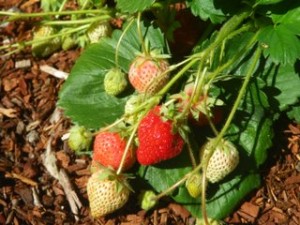
Who can resist a ripe strawberry?
Food in the garden doesn’t always mean going into the vegetable garden. With beautiful edibles in the landscaped portion of your yard, folks slow down to look and taste what’s there. It’s fun and excuse me for adding, healthy too!
A quick review reminds you that when designing your yard, put in plants that feed ALL your senses, eyes, ears, nose and mouth.

